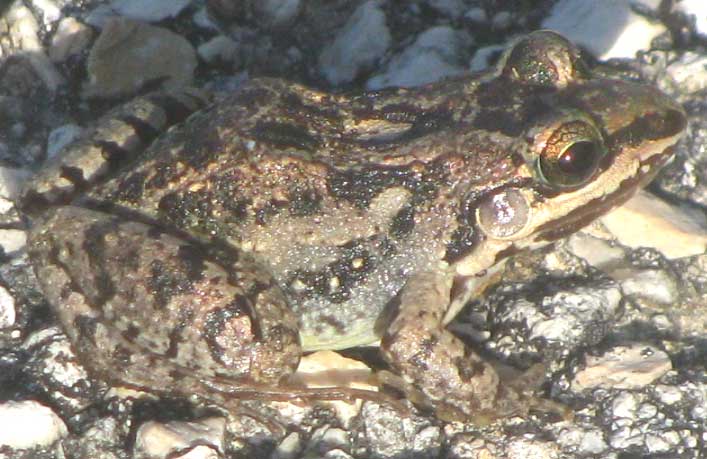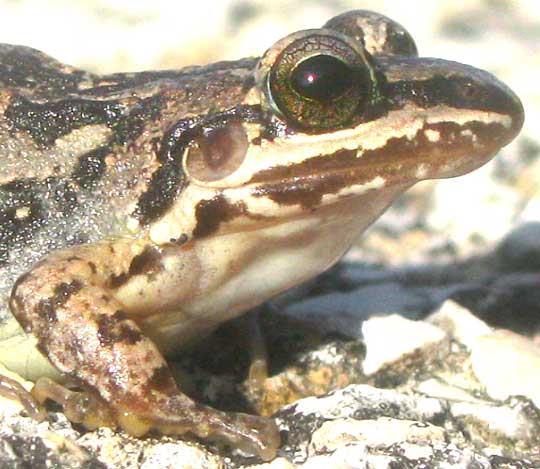Excerpts from Jim Conrad's
Naturalist Newsletter

from the September 11, 2011 Newsletter issued from Mayan Beach Garden Inn 20 kms north of Mahahual; Caribbean coastal beach and mangroves, ~N18.89°, ~W87.64°, Quintana Roo state, MÉXICO
FOAMFROG
At 8AM in full sunlight and in the middle of the semi-abandoned asphalt road across the mangroves I biked past the unblinking, 1.5-inch long (37mm) frog seen above. Here it's unusual to see any kind of frog other than the Gulf Coast Toad, so I was tickled when I turned the bike around, went back, and the frog was still there. Though its skin was warty, it wasn't a toad with poison-secreting parotoid glands behind the eyes. Its long toes lacked roundish tips helping it stick to vertical surfaces, so it wasn't a treefrog. It seemed to be something completely different from what I normally see, and maybe with that distinctive white stripe above the mouth I might even identify it.
So, it's the White-lipped Foamfrog, also variously called the Mexican White-lipped Frog, American White-lipped Frog and White-lipped Whistling Frog. It's LEPTODACTYLUS LABIALIS. It's a species occurring in a variety of habitats, including disturbed areas, from southwestern Texas (where it's listed as Threatened) south to Panama.
The name foamfrog alludes to how males use their hind feet to whip the bright yellow eggs and jelly capsules surrounding them, as well as his seminal fluid, into a foamy, meringuelike nest. In Amphibians and Reptiles of Northern Guatemala, the Yucatán, and Belize, Jonathan Campbell writes that the nests are usually placed in mud cavities a few feet beyond the water, during periods of increasing rains. Eventually rising water covers the nests.
Since this is the beginning of the rainiest part of our rainy season and the mangroves' waters grow deeper every week, I'm guessing that this female (large tympanum and rounded instead of pointed snout) was out looking for good egg-laying territory, maybe having been driven from where the water was getting too deep. The road she was on had flooded mangrove on both sides. The species is mostly nocturnal.
Below is another shot of this frog's head just meant for looking at and admiring.
